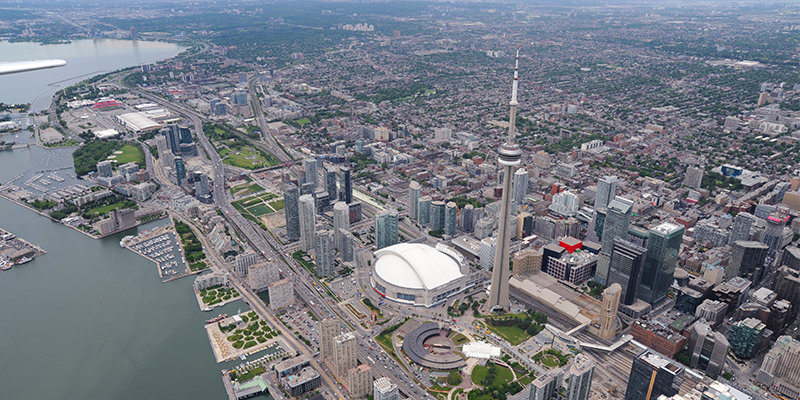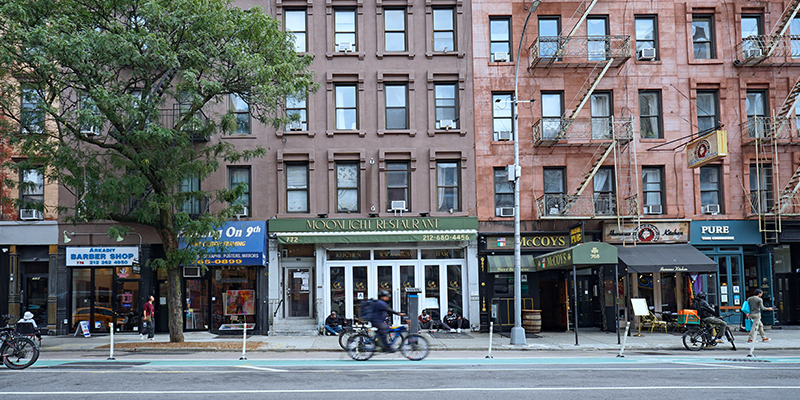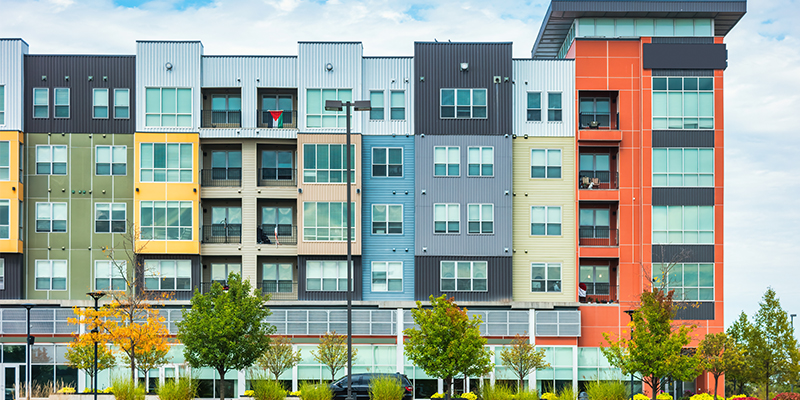As the second day of NAIOP’s CRE.Converge neared a close in Las Vegas, attendees had an opportunity to learn a bit about the city that will host next year’s conference: Toronto.
John Stewart, senior managing director for Industrial Property Advisors, presided over a CRE Talk that provided an array of updates on the Toronto market– from available industrial inventory and rental vacancy rates to transactional trends and a population boom that has sent the city’s home and rental prices soaring.
Here are three key takeaways from Stewart’s presentation.
Industrial space is plentiful … but not
If you’re looking for a big city that has turned a good amount of its land into industrial real estate, Toronto has you covered. Stewart noted that with 800 million square of inventory, Canada’s largest city is home to one of North America’s largest industrial markets.
If you’re looking for a place with a lot of available industrial real estate, however? It might be a good idea to turn your attention elsewhere. Because despite that massive market, Stewart said industrial vacancy rates are hovering around 2%.
While that may not be a good sign for those looking to enter the market, it’s a tremendous sign for those who lease industrial properties, particularly in the downtown space known to locals as the Greater Toronto Area (GTA).
“The story of the industrial market in the GTA for the last seven years has been the dramatic increase in rental rates,” Stewart said. “We’ve seen rental rates increase by 20% on a year-over-year basis – that’s exceptionally strong. And on the back of that, we’ve seen a significant increase in new development projects.”
As for potential buyers who are lucky enough to find some available industrial real estate in the GTA? They better have some deep pockets. Because in just five years, the average price of industrial real estate has nearly doubled,from $158 per square foot in 2019 to $305 in 2024.
Sorry, not for sale
As sparse as the industrial market inventory is in downtown Toronto, it’s downright abundant when compared with the residential side of the street.
A massive population influx – Stewart put the number at 500,000 newbies annually – has flipped the housing supply-and-demand equation upside down.
“The Greater Toronto Area [GTA] is in the midst of a housing crisis,” Stewart said. “We’ve got way more people moving into the city than we can currently house – we’re not building residential properties quickly enough.”
The economic fallout from that? You guessed it: skyrocketing home prices and apartment rentals.
Stewart said the median sales price of a detached single-family home in the GTA is up to $1.3 million CAD, which is the equivalent of $1 million in U.S. currency. And with apartment vacancy rates right around 1%, Stewart noted that the average effective monthly rent is $1,800 per month.
The situation isn’t much different with condominiums, even though there has been a recent spike in new construction.
“We’re building about 25,000 condo units per year, and we also recently started to increase the amount of apartment units being developed to about 10,000 per year,” Stewart said. “But even at 35,000 new units annually, the market doesn’t meet current demand.”
Let’s make a deal
Cultural diversity, economic diversity, superior quality of life.
Stewart rattled off a laundry list of reasons why Toronto has become a popular relocating spot, particularly for non-Canadians (who are replacing existing residents who in recent years have fled to more affordable cities like Calgary and Edmonton in the province of Alberta).
He also gave those who attended his CRE Talk a good reason to make the trek north for the next CRE.Converge, which is scheduled for Sept. 8-10, 2025.
“We’re significant exporters of real estate capital on a global basis,” Stewart said. “One of the reasons is our large Canadian pension funds – we call them ‘The Maple Eight’ – are exceptionally well capitalized.
“The reality is the Canadian market is only so large; there’s not enough institutional quality commercial real estate in Canada to satisfy our global investors. For many years they have been among the largest buyers of commercial real estate here in the U.S. Next year’s conference is a good opportunity to come to Toronto and meet with them.”
And perhaps do some business.
Industrial, office, mixed-use, multifamily. Networking, education, project tours and special events. It all converges at NAIOP’s fall conference! Save the date for CRE.Converge 2025, Sept. 8-10, at the Sheraton Centre Toronto, Toronto, Ontario.
This post is brought to you by JLL, the social media and conference blog sponsor of NAIOP’s CRE.Converge 2024. Learn more about JLL at www.us.jll.com or www.jll.ca.









